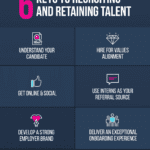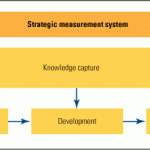Many companies say their employees are their greatest assets, yet they don’t all invest the time or resources necessary to find the best people for open positions. Creating a sound recruiting program and developing a respected brand can help companies add high-quality employees to their payrolls.
The U.S. labor force—like every area of life—has been greatly affected by COVID-19. It’s hard to predict the ways in which labor supply and demand in the construction industry may ultimately change as a result of the virus. If some industries, such as the restaurant industry, take a long time to recover, it may cause more people to look at construction as a preferred career path. Another possible outcome is that capital spending will abate temporarily then see a spike in 2021 or later. Depending on how these and many other variables play out, construction workforce shortages that were severe in the years leading up to 2020 may improve—or they may not. No matter how the future unfolds, construction firms and power plant owners need to work together to implement best practices for attracting the best talent to their teams.
The Construction Users Roundtable (CURT), an organization consisting of major private construction owners including utilities, manufacturers, and industrial companies, is encouraging construction owners to assess contractors based on their workforce development efforts. CURT members are responsible for $200 billion a year in construction capital and maintenance spending. Through its Labor Risk Management (LRM) Program, CURT owners are prequalifying and selecting contractors partly based on their commitment to workforce development.
Contractors need to become more engaged in workforce development efforts for both craft labor and professional staff. A shake-up in the labor force will make it imperative for companies to think “outside the box” to find newly displaced workers, as well as to work productively with career and other resource centers that are having their capacity strained. Now, more than ever, firms should be expansive in their hiring search. Consider participating in veterans’ programs; organizing outreach to women, minorities, and retirees; working with recruiters; and engaging with labor unions.
Contractors and owners can work together to develop specific initiatives. Particular focus should be placed on reaching out to youth. Offer support and expertise to colleges, high schools, and middle schools that have programs fitting the company’s needs. Working with student chapters of industry groups, such as Chi Epsilon, American Society of Civil Engineers (ASCE), Associated General Contractors (AGC), Associated Builders and Contractors (ABC), and others, is also an excellent way to build relationships with students. Companies can participate by offering guest speakers, hosting a social event, funding an on-campus project, or sponsoring a competition. An added bonus is that the student group leaders and officers are typically high-potential candidates.
It is also prudent to build relationships with the academic community. Professors, career placement offices, and other faculty members can help identify high-potential students for internships or employment. Further, they typically have great insight into a student’s work ethic, abilities, and interaction skills. Start by researching faculty members, their background, and classes they teach. Offer to be a guest speaker or host a class trip to a job site or engineering office. Professors are often looking for “real” projects that can give their students practical exposure. Consider teaching as an adjunct professor. Be sure to also reach out to professors that serve as faculty advisors to the aforementioned students’ groups.
Develop a Recruiting Program
Hiring should not consist of intermittent, ad hoc efforts. Similarly, bare-bones efforts like single postings of open positions won’t offer the best payoff. Rather, recruiting should be a fully developed program. Investing this level of effort not only helps reach the right audience, but effectively communicates what differentiates a company from its competitors.
Employees want competitive pay, good hours, health coverage, safe workplaces, quality training, opportunities for advancement, and performance-based recognition through bonuses and perks similar to those offered to employees in managerial positions. The key steps that follow are part of a robust recruiting program.
Create a Process and Establish Accountability. While many companies have a full-time recruiter or human resources staff, others do not. With either scenario, someone needs to own recruiting and be accountable for results. The recruiting function should have an annual plan, performance indicators, and budget like other parts of the business.
Have Accurate Job Descriptions for Each Position to Be Filled. Precise descriptions keep the team focused during the search and interview process. Unlike the days of placing classified ads in newspapers, firms should now use a variety of channels including local online ads; employment websites like Zip Recruiter and Indeed; LinkedIn and other social media sites; and career placement offices at local schools, technical programs, and community outreach centers. LinkedIn, Zip Recruiter, and Indeed all offer recruiter packages that include employer feature pages and tools to manage applicants.
Establish an Applicant Tracking System (ATS). Tracking software tools help companies keep resumes in one place. Not only does this promote organization, but it also keeps the company compliant with Equal Employment Opportunity Commission (EEOC) requirements. An ATS also saves time by surfacing and highlighting top candidates, and many ATSs even offer plug-ins for websites, allowing for ongoing management of postings and acceptance of resumes. While not every construction company or utility will have the resources to invest in a software tracking system, a process for tracking and managing candidates is a must.
Make the Interview Process Productive. Expose candidates to key people in the organization. Facilitate a two-way exchange of information (Figure 1). Not only should a company learn about the candidate, but also the candidate should learn about the company. Ask open-ended questions to get the conversation going. Discuss the organization, history, clients, training, safety, quality, management, and development programs. Present an attractive work environment by communicating the key benefits of the company culture. This can be accomplished through storytelling, for example, talking about long-term employees, training and development programs, community engagement, and more.

Once the Right Candidate Is Identified, Make a Compelling Offer. Determining compensation will include benchmarking salaries for current employees, local competitors, and other local competing industries. Present health benefits, insurance coverage, vehicles, and other perks. Also, be sure to talk about the onboarding process, expectations, and reviews and evaluations.
Employment Branding
Job seekers have become increasingly savvy and the internet has given them an opportunity to learn a great deal about a company before ever having an interview. In fact, many learn about a company before deciding to interview. Branding—often a hot topic in marketing circles—is coming up more in discussions of recruiting skilled employees.
Recruit-focused branding (Figure 2) should clearly communicate ideas and expectations associated with a company and help create a desire within candidates to work for the firm. One of the key principles of effective recruiting is creating an image as the “employer of choice.”

Begin by surveying current employees to determine what they value most about working in the firm. Sit down with top performers and discuss what they like about their jobs, why they stay, what they think might make the company appealing to outsiders, and more.
On the flip side, exit interviews can uncover hidden or emerging issues within a firm, enabling problem areas to be quickly addressed. Once four or five value points have been identified, they should be turned into key messages about the company. Consider engaging the marketing team to help develop messages and strategies.
Use company blogs, social networking sites, and other emerging tools to help attract talent and properly position the firm. Develop articles about the company and its people to showcase ways in which they are unique in the industry. Public relations, an often-forgotten tool in recruiting efforts, is a great way to get the message out about the firm. It provides third-party credibility that is hard to achieve with other mediums and affords the opportunity to dispense key messages to a new—and wider—audience.
Companies that actively share news about new hires, promotions, projects, and more will have a higher public profile and will likely be viewed as a more desirable place to work. People want to be on a winning team, so visibility in the industry has long-term benefits. Participating in rankings, competitions, and lists is another great way to position a firm as an employer of choice. Consider nominating the company for recognition as a top contractor, best place to work, top company, and more.
Websites such as GlassDoor allow current and former employees to post reviews about a company. While these can be positive and helpful, negative reviews can significantly impact business. It is important to monitor these sites on a regular basis and positively address any negative review. This requires a careful response. To avoid creating a debate online, thank the poster for their comments and offer to follow-up with them offline to address their issues. Doing so demonstrates an interest in the poster’s perceptions and experiences.
Everyone Is a Recruiter
It’s a common observation that “everyone in the firm is a marketer.” Similarly, everyone in the firm is a recruiter. In fact, many positions in the industry are filled through referrals from existing employees.
By developing a recruiting referral program, employees are given incentives for introducing people to the company. As an example, a referrer may get 50% of the referral amount after the new hire has been with the company for 30 days and the remaining 50% after 6 months. Encourage these programs by promoting them at company meetings and on the company intranet, or by giving the referral checks in front of other employees at company events. And don’t forget, employees must know about open positions in order to make referrals, so post job openings internally.
Arming employees with an “elevator speech” enables them to quickly and clearly articulate information about the company. The 30-second speech should explain the real benefits of working at the firm as well as why it is unique in the industry. Each interaction employees have with people—trade shows, industry events, projects, etc.—provides an opportunity to network and get the word out about the company and its employment opportunities.
In addition to ensuring all team members are selling the firm in the same manner, there must be consistency between recruiting materials, the company website, and other marketing collateral. The tone of all messaging should be warm, friendly, and welcoming. Consider including thoughts from current employees that span a wide demographic and experience level—a new hire, someone who has been with the company for about a year, seasoned employees, etc. Develop profiles, question and answer forums, and even videos with team members. Let them help sell the experience of working at the firm.
Finally, never underestimate the power of storytelling. People can easily relate to other people sharing a story. In recruitment efforts, it is critical to personalize the process and make a human connection with prospective employees. Career choices are some of the biggest choices people make, as they affect nearly every other aspect of life. People want to feel comfortable with their selection and know that their contributions will be valued. In either a good or bad economy, recruiting-focused branding is critical to getting the right employees. This process helps drive people to the company, making it an employer of choice. ■
—Brian Gallagher is vice president of Corporate Development with Graycor.










